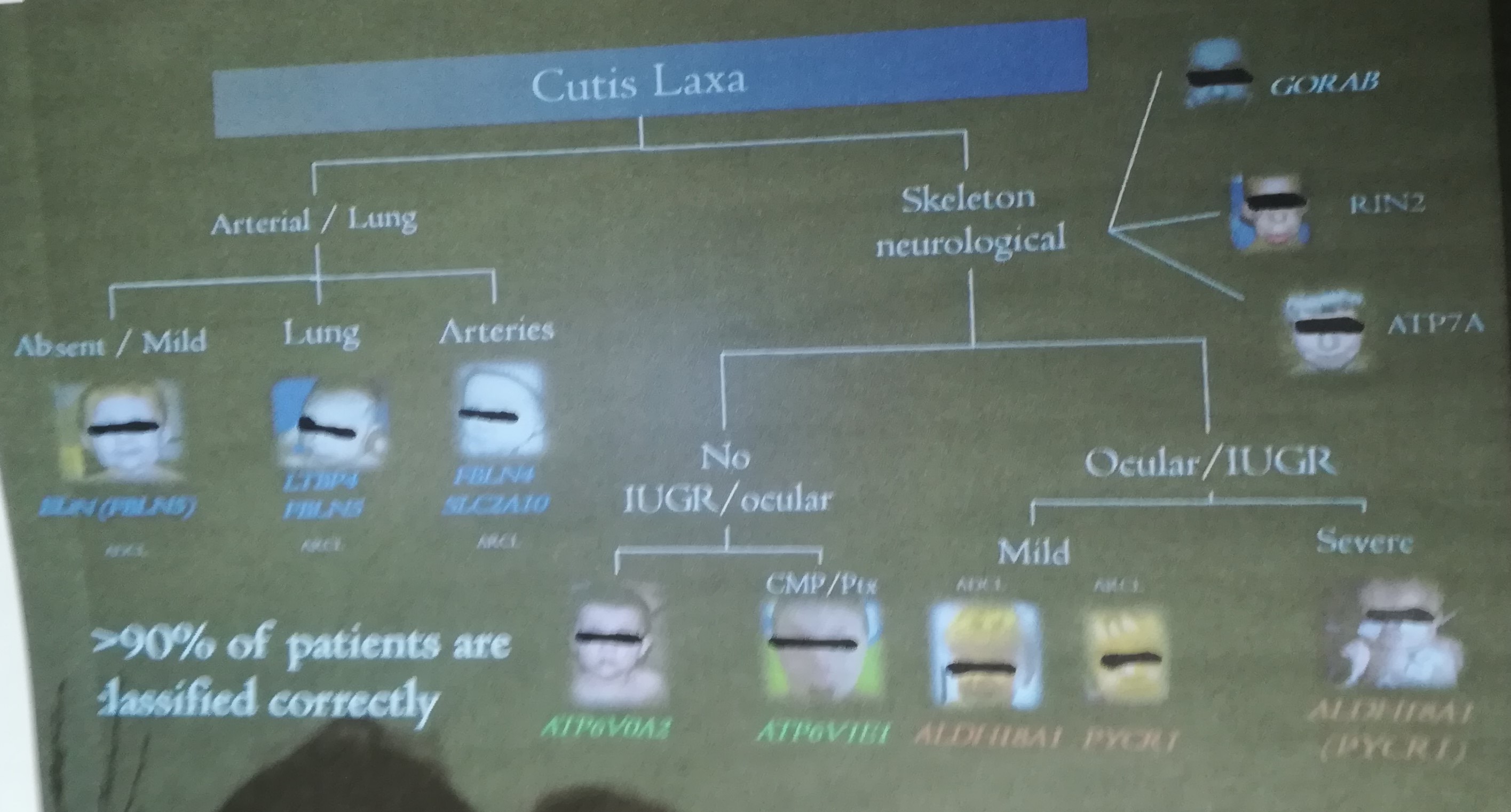Cutis Laxa Videos…… N°1
Here is the first of 8 videos edited by EwenLife on their Youtube Channel
Marie-Claude Boiteux explains what Cutis Laxa is and the different types.
It is in French, but here is how you can get subtittles in your own language

Here is the first of 8 videos edited by EwenLife on their Youtube Channel
Marie-Claude Boiteux explains what Cutis Laxa is and the different types.
It is in French, but here is how you can get subtittles in your own language

Since Cutis Laxa Internationale was set up, we have received many patients’ and parents’ testimonies.
They are now collected in a newly published book :
« Cutis Laxa, Story of a Rare Disorder, Patients’ testimonies ».
It is available in French, English and Spanish. We will send it to you on request, at €25 per copy.
Orphanet has just edited its new study about rare disorders in France.
You can read here the whole study (in French)
The French monthly magazine “La Revue du Praticien” (The Medical Practitioner’s Journal) published an article on Cutis Laxa in its November issue.
Read the article here (in French)
We have developped 2 patient journeys based on testimonies from our members on what it is like to live with a Cutis Laxa.
Those documents aim to be a tool for health care professionals and patients during a consultation to help them agree on the best possible care on a long term basis.
They will be updated as often as needed to fit with the patients’ daily life and the most recent findings and treatments.
CUTIS LAXA WITH ARTERIES AND LUNGS SYMPTOMS
CUTIS LAXA WITH NEURO AND SKELETON SYMPTOMS
SAVE THE DATES
The 6th Cutis Laxa Days will be held at the University Hospital of Ghent( Belgium)
on 14th, 15th and 16th September 2022
Set up 3 years ago by the European Commission, they aim to help patients with rare disorders receive a right diagnosis and follow-up, gather together all European experts and Patients Organisations to allow patients to get the best care.
The European Commission, Patients and ERN Coordinators give their point of view
European Commission (in almost all European Languages)
https://audiovisual.ec.europa.eu/en/video/I-193046
Patients (in English and/or with English subtitles)
https://audiovisual.ec.europa.eu/en/video/I-191813
ERN Coordinators (in English and/or with English subtitles)
A possible improvment of the symptoms in Acquired Cutis Laxa associated with monoclonal gammapethy or multiple myeloma:
A haematologist from Sao Paulo (Brasil) has had very satisfactory results in two cases with an autolog bone marrow transplant.
For those two patients the results were more than encouraging though we certainly cannot talk about treatment or cure yet.
Many studies and therapeutic trials are still necessary to get there.
Nevertheless this is a huge leap for those patients
A scientific study on Acquired Cutis Laxa (ACL) is led by
Pr Bert CALLEWAERT
Center for Medical Genetics – Ghent University Hospital
De Pintelaan 185 – B-9000 Gent
Email : Bert.Callewaert@Ugent.be
This type of Cutis Laxa has never been studied before.
It is a great opportunity to learn more about it : how it appears, what are its causes and maybe a first step to treatment.
Worldwide patients with ACL can take part in it. The doors of hope are opening up for them.

16th December : ERN-Skin, training session in Ghent (Belgium).
Organised by Pr Bert Callewaert, this session included a whole chapter dedicated to Cutis Laxa and all the scientific progress about it. See below “What’s new about Cutis Laxa».


Other pathologies were also presented and patients representatives took part in a panel discussion « Patients’ burden : What healthcare professionals need to know ? ».
What’s new about Cutis Laxa
During the training session in Ghent, the first part of the morning was almost totally dedicated to Cutis Laxa.
Several cases were presented by young doctors.
An overview talk on Cutis Laxa presented the clinical classification of Cutis Laxa disorders. Cutis laxa has an extensive clinical and molecular heterogeneity.


Based on a flowchart addressing the presence or absence of the main clinical symptoms, over 90 % of the people suffering from Cutis Laxa are correctly classified.

The main symptoms are: arterial tortuosity, emphysema, wrinkled/lax skin, neurological issues with or without intrauterine growth retardation (IUGR). In addition to those main symptoms, minor criteria are suggested for each type: arachnodactyly, aortic aneurysm, aortic stenosis, respiratory distress, diverticula, hearing loss, large anterior fontanelle, joint contractures, hip dislocation or ataxia.

The classification was based on a ‘learning’ cohort of patients known to the Ghent University Hospital. Refinement of the classification is ongoing based on a confirmation cohort from literature (650 patients). Patients are classified based upon clinical examination and the main symptoms into major groups. Further refinement based on the minor criteria will eventually be able to predict the causal gen in over 95% of patients.

As an example, a patient with a lax skin, neurologic issues, intrauterine growth retardation as well as hip dislocation and ataxia, associated with ALDH18A1 mutation, will be diagnosed with Autosomal Recessive Cutis Laxa Type 3 or Syndrome De Barsy (ARCL3).

This new classification will help to a quicker diagnosis, interpretation of next-generation sequencing data and provide an opportunity of specific management and care for each type of Cutis Laxa.


Ghent University welcomed this session in its historic buildings.
Pure marvel, as is all the city of Ghent..….
This site uses cookies. By continuing to browse the site, you are agreeing to our use of cookies.
OKLearn moreYou can read about our cookies and privacy settings in detail on our Privacy Policy Page.
Privacy Policy